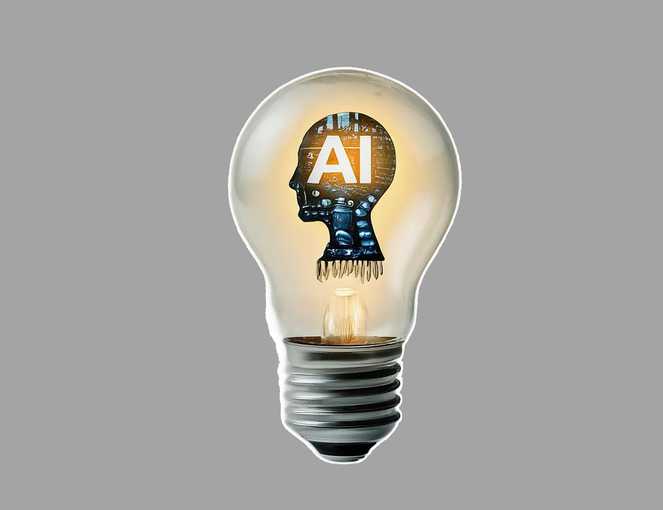Overcoming Obstacles to Securing Patents for AI-Related Inventions
Overcoming Obstacles to Securing Patents for AI-Related Inventions

Companies in multiple industries are experimenting with artificial intelligence to generate specific solutions to long-standing challenges. To this end, numerous companies are filing patent applications for inventions involving AI. Many of these innovators do not have an AI background, however, and have never filed AI-based patent applications before. Here are key aspects in-house counsel and inventors need to keep in mind when developing their AI-based inventions to increase the likelihood of obtaining valuable patent protection.
A primary issue with obtaining AI-based patent protection is that the U.S. Patent and Trademark Office (USPTO) and/or the U.S. Court of Appeals for the Federal Circuit court may consider the invention to be unpatentable as an abstract idea. Under the standard set forth in Alice Corp. v. CLS Bank International, 573 U.S. 208 (2014), a patent application may be rejected if it is directed to patent-ineligible concepts without something significantly more. One of the pitfalls of AI-based inventions is that many involve subject matter that courts have held are directed to abstract idea without “significantly more”. Examples of subject matter the courts have held to be unpatentable include converting of one set of data to another, data analytics for the mere purpose of displaying insights, or performing functions that a human would otherwise perform.
Here is one example from USPTO guidelines that the agency considers problematic:
“A post-surgical fibrosis treatment method comprising: (a) collecting and genotyping a sample from a glaucoma patient to a provide a genotype dataset; (b) identifying the glaucoma patient as at high risk of post-implantation inflammation (PI) based on a weighted polygenic risk score that is generated from informative single-nucleotide polymorphisms (SNPs) in the genotype dataset by an ezAI model that uses multiplication to weight corresponding alleles in the dataset by their effect sizes and addition to sum the weighted values to provide the score; and (c) administering an appropriate treatment to the glaucoma patient at high risk of PI after microstent implant surgery.”
Therefore, care needs to be taken in how the invention is characterized in the patent application so as to not be immediately rejected as an abstract idea. One possible approach is to characterize the invention as a solution directed to a technical problem, or for solving an underlying problem in the technological field. For example, if the solution allows users of the invention to do something they could not have done before, or if the invention provides a solution to a long-standing problem in the art, such characterizations can provide sufficient support and context to move the invention from an abstract idea to something that has a technical effect, thus avoiding the claims being held unpatentable.
Another way to consider outlining the invention is to describe the practical uses of the outputs of the AI-based invention based on the received inputs. In many AI-based inventions, the AI algorithm is trained to provide specific outputs from underlying training techniques. If the outputs are then used to affect how an underlying system operates (e.g., to control robotics, perform software functions, and so on), then a working flow from the input to the output to the effect, along with the explanation of the training of the algorithm regarding how to learn and generate the outputs from the inputs, will help a patent examiner understand how a technical effect is achieved. Depending on the description and the technical effect, it may be sufficient to convince the examiner not to dismiss the invention as an abstract idea.
Further, if the AI-based invention itself results in improvements over the prior art, then that may be sufficient to avoid being rejected as an abstract idea without anything more. Examples of improvements can include providing a solution faster than the prior art, saving on processing or memory resources, or generating a more accurate solution than the prior art.
Finally, if the inventions will also be filed abroad, there are several special programs one can use to build the patent portfolio in the U.S. and elsewhere. One program is the Collaborative Search Pilot (CSP). An application filed in Japan with claims identical to a U.S. application, for instance, allows the U.S. and Japanese examiners to collaborate and issue a collective office action in an accelerated manner. Such collaboration may result in a higher chance of getting a patent granted as Japan has a higher allowance rate for AI-based inventions than the U.S. Another possibility is the Dutch Route, which I and others outlined in a Procopio Perspectives podcast. This involves filing an application into the Netherlands to obtain a European search report before filing in other countries. Because an application only requires claims and a basic description, it can be used as a good testing board from a U.S. provisional filing to determine if further prosecution is warranted.
As companies of all sizes start to build and scale their AI-based patent portfolios, it is important to consider how to characterize or define the inventions to avoid being rejected as an abstract idea without anything more, and to consider the special programs that may be available when filing abroad.
MEDIA CONTACT
Patrick Ross, Senior Manager of Marketing & Communications
EmailP: 619.906.5740
EVENTS CONTACT
Suzie Jayyusi, Events Planner
EmailP: 619.525.3818

